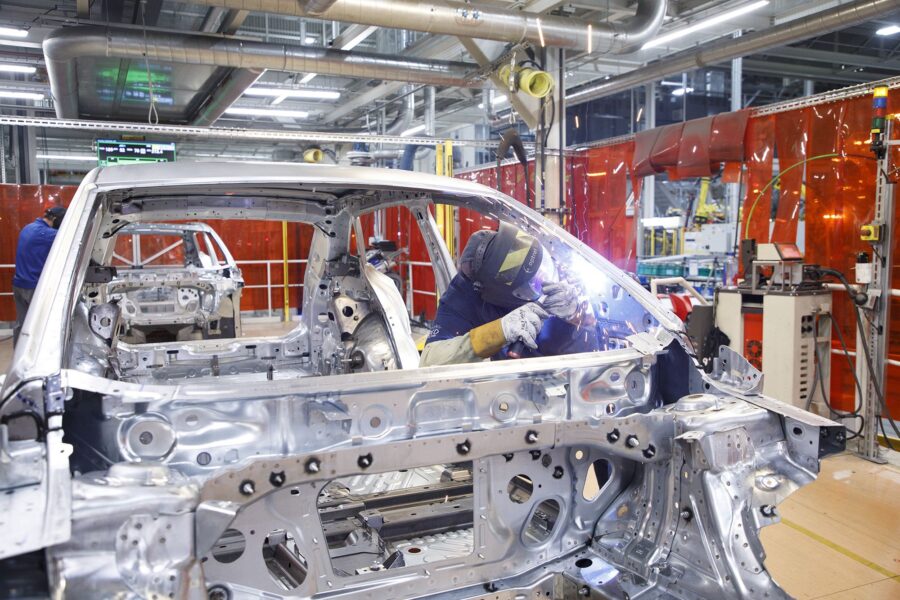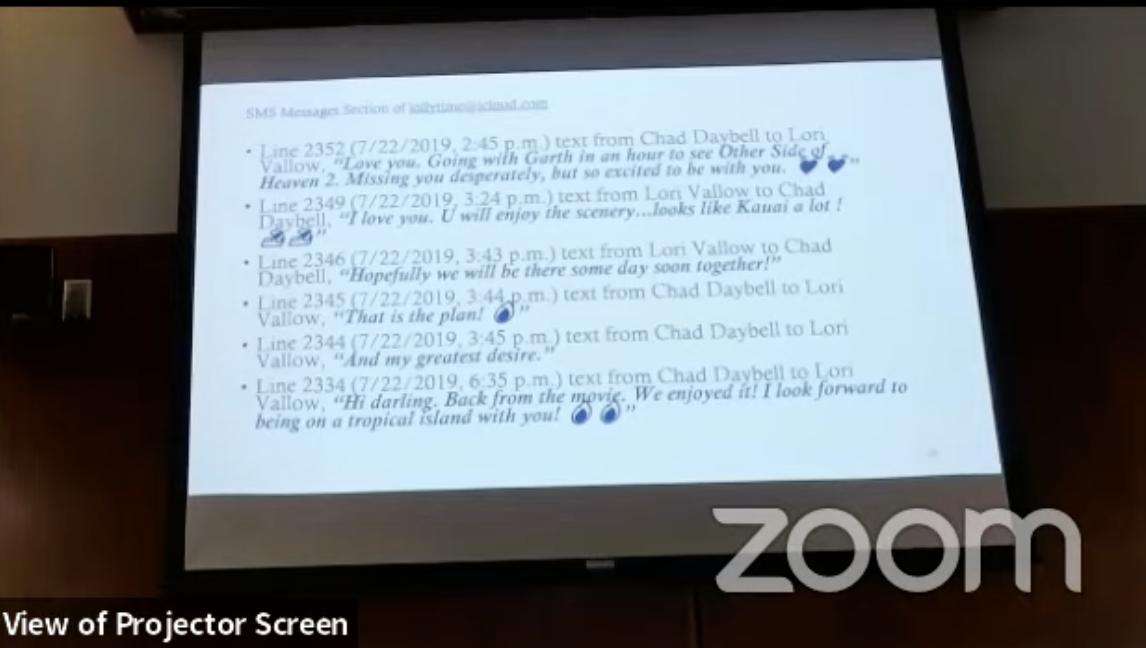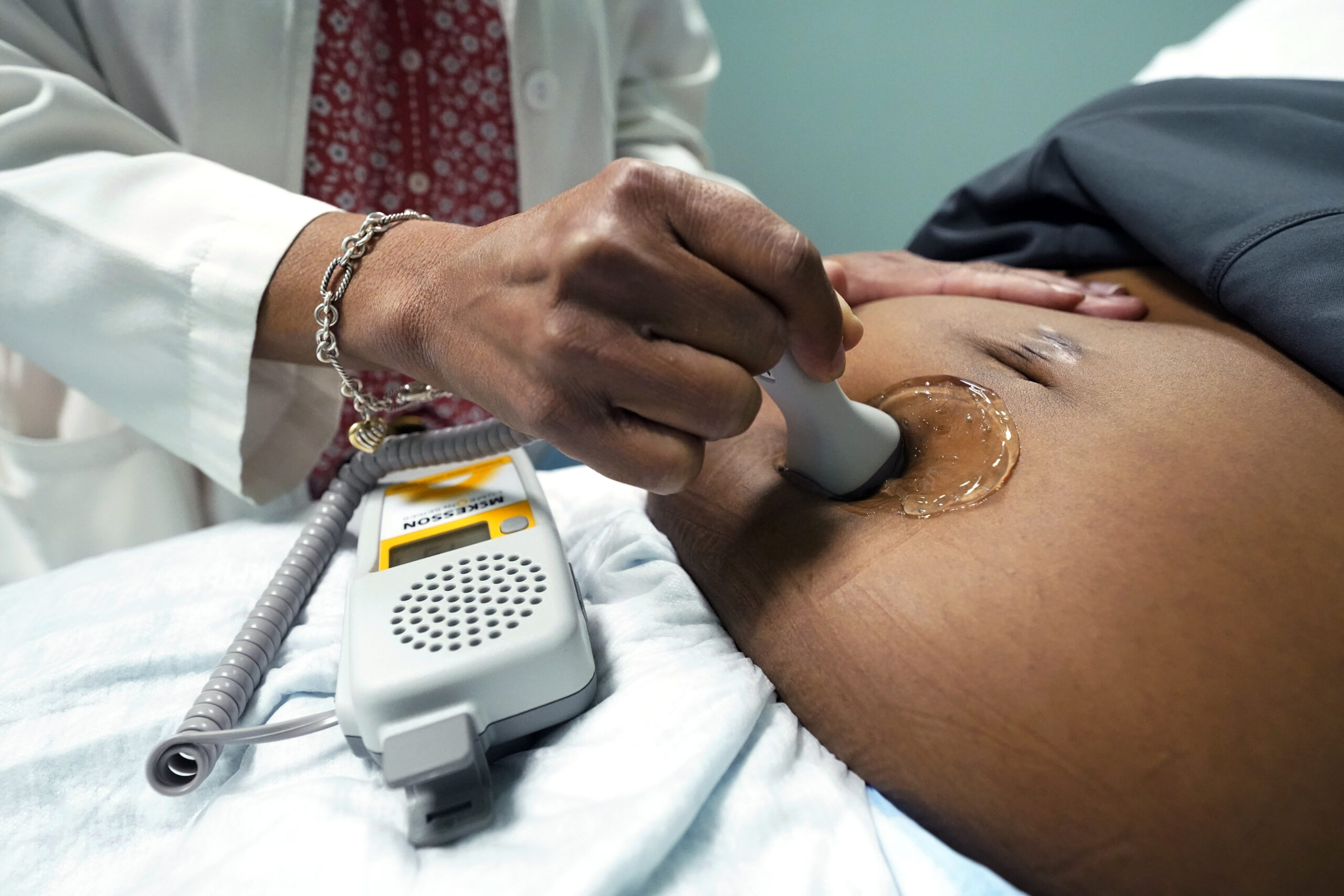NASA rolls mega Artemis I moon rocket out to the launchpad
Mar 18, 2022, 9:59 AM | Updated: Jun 8, 2022, 3:17 pm

In this view looking up in High Bay 3 of the Vehicle Assembly Building at NASA’s Kennedy Space Center in Florida, all of the work platforms that surround the Artemis I Space Launch System (SLS) and Orion spacecraft are fully retracted on March 16, 2022. The Artemis I stack atop the mobile launcher will roll out to Launch Complex 39B atop the crawler-transporter 2 for a wet dress rehearsal ahead of launch. (NASA/Glenn Benson)
(NASA/Glenn Benson)
(CNN) — The Artemis I mission is another step closer to its lunar launch.
The massive 322-foot-tall (98 meters) stack, which includes NASA’s Space Launch System rocket topped by the Orion spacecraft, rolled out for its testing debut at Kennedy Space Center in Florida on Thursday.
The integrated stack, which sits on a mobile launcher, began its slow-moving crawl into launch position Thursday afternoon. The rollout officially began at 5:47 p.m. ET.
The 4-mile (6.4-kilometer) ride aboard one of the Apollo-era giant NASA crawlers from the assembly building to the launchpad took almost 11 hours. The stack arrived at the pad at 4:15 a.m. ET on Friday.
.@NASA_SLS and @NASA_Orion are on the way to Pad 39B! Check out photos as they were rolled out atop the mobile launcher! 📷https://t.co/RgnwqO63ib pic.twitter.com/flKzQ9PHnJ
— NASA HQ PHOTO (@nasahqphoto) March 18, 2022
As the stack emerged on Thursday, it became the first moon-bound rocket to leave the building since Apollo 17 in 1972, or 50 years ago — also the last time anyone set foot on the moon.
“Every single vehicle that has carried humans beyond the bounds of low-Earth orbit has undergone integration and testing in that Vehicle Assembly Building, crawled down this roadway and launched right here from the Kennedy Space Center,” said Janet Petro, director for Kennedy Space Center, as the rollout began on Thursday.
Together, the rocket and spacecraft stand just taller than the Statue of Liberty.
“Rolling out of the (Vehicle Assembly Building) is really an iconic moment for this vehicle,” said Tom Whitmeyer, associate administrator for exploration systems development at NASA Headquarters during a Monday press conference. “Thursday is going to be a day to remember.”
A final test
Following a couple weeks of tests at the pad, the vehicle will be ready for its wet dress rehearsal the weekend of April 1 — the final test before launching the first uncrewed Artemis mission beyond the moon and back to Earth. NASA is collecting names to be put on a flash drive and sent into space on the Orion spacecraft.
The wet dress rehearsal includes running through the full set of operations to load propellant into the fuel tanks and a launch countdown — basically everything necessary for a launch without actually launching. During the hours of prep leading up to the wet dress rehearsal, more than 700,000 gallons of cryogenic propellants will be loaded into the rocket
If the test is successful, the stack will go back into the assembly building until it’s ready to launch.
“Artemis I is such an important mission for us,” said Howard Hu, manager of the Orion program at NASA’s Johnson Space Center in Houston, during the Monday press conference. “It’s gathering very critical engineering data and validating our performance capability as spacecraft for our next mission and beyond — Artemis 2 with the crew and future missions as we go further and expand our capabilities in the solar system.”
The Artemis program has experienced a multitude of delays. The mission was originally scheduled to launch in November 2021, but the pandemic, storms like Hurricane Ida and other factors have drawn out the mission time line.
Artemis I is the first step of NASA’s ambitious program to land the first woman and the first person of color on the moon later in the 2020s. It’s all in preparation to establish a long-term lunar presence and to prepare for exploring Mars. Depending on the results of the wet dress rehearsal, the uncrewed mission could launch in May, June or July.
During the flight, the uncrewed Orion spacecraft will launch atop the SLS rocket to reach the moon and travel thousands of miles beyond it — farther than any spacecraft intended to carry humans has ever traveled. This mission is expected to last for a few weeks and will end with Orion splashing down in the Pacific Ocean.
Artemis I will be the final proving ground for Orion before the spacecraft carries astronauts to the moon, 1,000 times farther from Earth than where the space station is located, said Cathy Koerner, former Orion program manager, in October. Koerner is now NASA’s deputy associate administrator for exploration systems development.
After the uncrewed Artemis I flight, Artemis II will be a crewed flyby of the moon and Artemis III will return astronauts to the lunar surface. The time line for the subsequent mission launches depends on the results of the Artemis I mission.
“There’s no doubt that we are in a golden era of human space exploration, discovery and ingenuity in space, and it all begins with Artemis, I,” said NASA Administrator Bill Nelson during the rollout.
“The Space Launch System is the only rocket capable of sending humans into deep space. It’s the most powerful rocket in the world. Orion will venture farther than any spacecraft built for humans. And after a three-week journey of over a million miles, Orion will come home faster and hotter than any vehicle has before.”
NASA astronaut Victor Glover Jr. was also at the rollout and reflected on the importance of the Artemis program.
“This is our rocket, it’s humanity’s rocket,” Glover said. “When those four RS-25 (engines) and two solid (rocket boosters) light, I hope the whole world is watching. And I hope a lot of kids decide to study science and math because of it. And that’s really what it’s about, inspiring kids to go out and be their best selves.”
An iconic crawl
Artemis I rode on top of Crawler-transporter 2 for its trip to the launchpad, just like the shuttle missions and Apollo Saturn V rockets once did.
The 6.6 million-pound (3 million-kilogram) crawler carried the towering rocket stack and its mobile launcher at a top speed of 1 mile per hour (1.6 kilometers per hour).
The iconic crawler is one of two that have operated for more than 50 years at Kennedy Space Center. They were first operated in 1965 and can each transport 18 million pounds (8.2 million kilograms), or the weight of more than 20 fully loaded 777 airplanes, according to NASA. They are so wide that a professional baseball diamond could sit on top of each crawler.
“It’s gonna be amazing,” said Charlie Blackwell-Thompson, Artemis launch director for NASA’s Exploration Ground Systems program at Kennedy Space Center on Monday. “She has been in operation for 50 plus years and underwent significant upgrades as part of getting ready for this vehicle and for Artemis operations.”
After upgrades, Crawler-transporter 2 should be able to keep hauling massive rockets to the launch pad for years to come.
The-CNN-Wire
™ & © 2022 Cable News Network, Inc., a WarnerMedia Company. All rights reserved.













